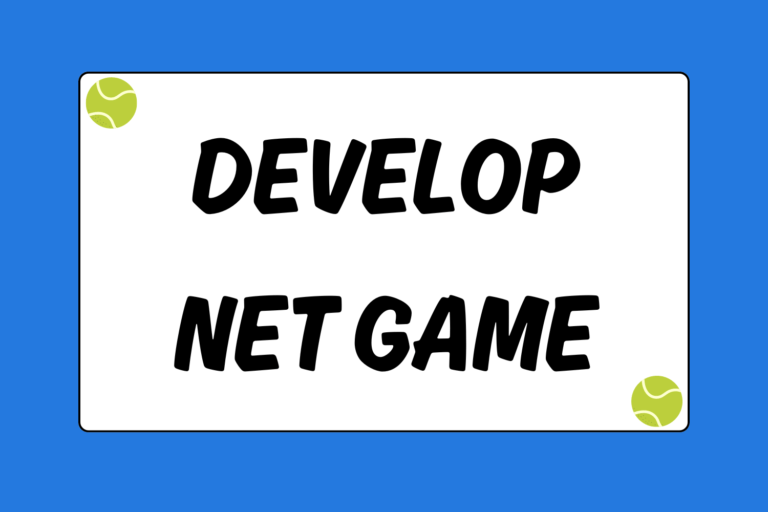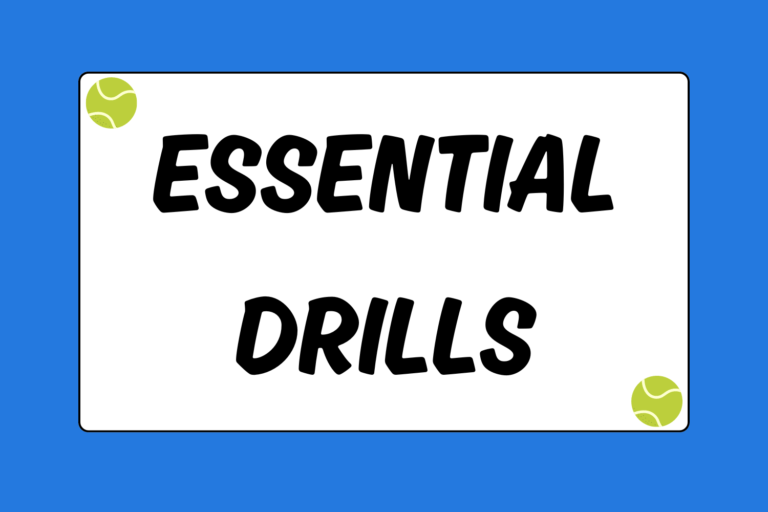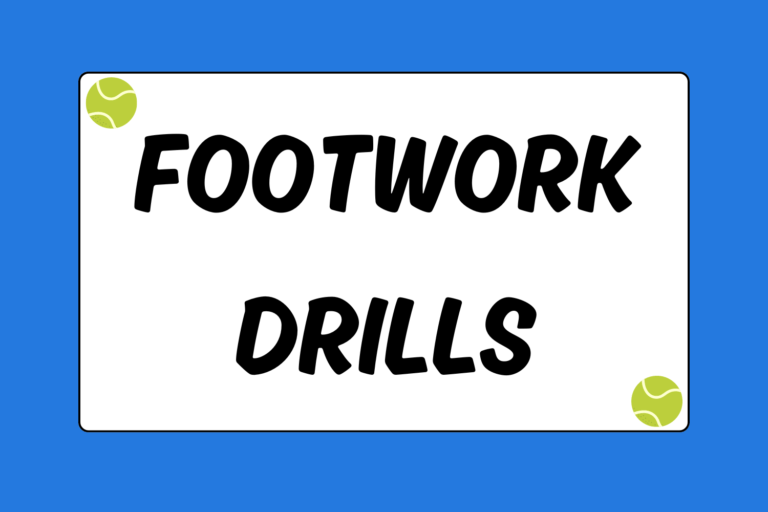Are you struggling to beat that pesky player at your local club? Do you get the lead midway through the game, but always seem to come up just a bit short at the end? Don’t get discouraged. Tennis is a game where small improvements can reap big rewards, and one of the best ways to advance your game is through a consistent drill routine.
This guide outlines some basic drills to improve the weakest areas of your tennis game while also strengthening what you already do well—but remember that tennis is a sport that rewards practice and repetition, so plan a schedule for the exercises and stick to it.
Drill 1. Deep Rally
Intermediate players often struggle to hit consistently deep in the court, but hitting shorter balls that land before the service line allows the opponent to take control of the point. This drill, called “deep rally” is designed to make you more comfortable hitting deeper and longer strokes which will even up the momentum of play.
- The drill takes two players, so you will need a partner. The goal of the drill is to have each player hit the ball past the service line a certain amount of times in a row.
- Before starting the rally, set a goal of 10 balls in a row—meaning each player must hit the ball past the service line five times in a row before the drill is over. By concentrating on the depth of the stroke, each player will be forced to practice consistently lengthening their swing.
- Once the goal is reached, change up the number from 10 to 20 and so on.
Drill 2. Down the Line Cross Court
This drill is executed exactly how it sounds—it forces each player to hit the ball in a designated area, regardless of where the player is positioned on the court. Although the direction of hits is predictable, the drill forces both players to hustle into position while still staying in control of their shot.
- Each player stands on opposite sides of the court.
- Assign one player to hit the ball down the line, while the other player hits cross-court.
- Pick a number of required consecutive shots, preferably beginning with no less than 10 balls in a row.
- After 5 or 10 minutes, alternate assignments.
Drill 3. The Approach Shot
Many players at the intermediate level only practice hitting groundstrokes from the baseline. The following drill forces players to hit balls from different positions on the court and emphasizes the necessary footwork required for each move.
- The drill begins with a rally between the two players.
- The pair must hit five balls back and forth before a player can win the point.
- After the fifth groundstroke, the players must approach any ball that does not cross the service line.
- The player attacking the short ball must hit an approach shot and come to net. If the player fails to hit an approach shot and come to net, that player loses the point.
- The first to 11 wins the game.
Drill 4. Down the Alley
The down the alley drill limits the size of the court to just one doubles alley, with a set number of hits required per rally in the designated area. This forces players to concentrate on consistency and accuracy, instead of just power.
- Each player stands on opposite sides of the court in the doubles alley directly across from their practice partner.
- The pair must hit between 10-12 shots in the space in order to complete the drill. As you build accuracy and complete your goal, increase the number of consecutive balls.
- Practice this drill for 10 minutes.
Drill 5. Overhead Smash and Run
The overhead smash and run drill is for any player who struggles to put away the point. There is nothing more disheartening in the game of tennis than losing a point you controlled until the final shot. The goal of this drill is to use the proper footwork and technique needed for the overhead smash that so often wins the point.
- One player starts at the net. The other player should stand on the baseline on the opposite side of the court.
- The player at the baseline has a basket of balls.
- The player at the net touches the net with his racquet to signal he is ready to begin.
- As the player touches the net, the player on the baseline hits a fairly deep lob.
- The player at the net then back peddles into position for an overhead smash.
- After the player hits the overhead, he sprints to the net and taps the net again with the racquet signaling they are ready for another overhead.
- Repeat this process until the player at the net is too tired.
- Switch roles allowing both players to practice the overhead and their footwork.
Drill 6. The Serve Drill
The serve is the one shot in tennis where a player has complete control, which makes it that much more important to practice and refine. The typical intermediate player or club level player will practice serving for maybe 5 to 10 minutes during the warm up for a match, but in reality, it takes much longer to perfect this aspect of play. Use the drill below to get in real serving practice.
- Grab a basket of balls and set up three targets (you can use cones or a pyramid of balls) along the service line on the other side of the net in both the deuce and ad courts.
- Number each target your head from left to right with the numbers 1-6.
- Before every serve, call out which target you are aiming to hit.
- Make sure to practice serving for at least 30 minutes.
Drill 7. Charging the Net
Intermediate players are generally more confident hitting groundstrokes than they are hitting volleys at the net. The most common mistake intermediate players make when volleying is to wait for the ball to come to them, instead of charging the net to catch the ball at its highest point to maintain control of the shot. This drill will improve a player’s movement and aggression at net. The general rule is that the faster a player can get to the ball, the easier the volley will be to control.
- The volleyer stands three feet behind the service line, while the feeder stands in the doubles alley with a basket of balls.
- The feeder hits a ball with relatively little pace and with a net clearance of 6 to 7 feet. The goal of the feeder is to hit a ball short and high enough, to allow the player time to sprint to the ball in a forward direction and hit the volley before the ball drops in height.
- If the player volleying does not reach the ball in time to hit it at the highest point, that player must either run a lap around the court or do some jumping jacks. By acknowledging where the point of contact was made, the player is made aware of the height at which to hit volleys.
- Repeat the drill until the net player is tired.
- Switch roles
Drill 8. The Basic Return Drill
“My return is based 100 percent on a simple hip turn. Imagine the butt of the handle of your racquet is taped to your stomach, so the racquet points at your opponent as you face him. Now if you just turn your hips, your racquet is going to be prepared to hit the return. A good drill to teach a quick hip turn is simply to stand as if you’re about to return serve and have somebody shout “forehand!” or “backhand!” and you react instantly with a hip turn, without a ball. The hip turn is an easy way not only to be prepared quickly, but also to keep yourself from swinging too big at a ball that you don’t need to swing hard at.”
Andre Agassi
Add the basic return drill to your practice schedule to become a bit more like Agassi.
- The drill consists of two players, one standing at the service line with a basket of balls, the other on or near the baseline on the other side of the net.
- The player at the service line hits serves to the baseline/returning player.
- The server alternates between different types of serves: slice, flat, topspin, and kick. By switching up, the returner will be forced to improve the return on all types of serves.
- It is recommended that the server stands at the service line because it is easier to consistently hit serves from this position on the court. The goal is to hit as many returns as possible and to become comfortable with returning different types of serve.
- Practice returning from both the deuce and advantage court.
- Rotate server and returner.
Drill 9. The Pepper Game and the Ball Drop Drill
As your game develops and the level of play advances, the shots from your opponent will also increase in speed and difficulty, so improving your reflexes and reaction time will become crucial for staying competitive. Below are some drills that can help you improve hand-eye coordination and speed up reaction time.
The Pepper Game
- One player stands in a volleying position at the service line while the other player stands near the “T” (where the center of both the service boxes meets) on the other side of the net.
- The player at the “T” will feed the other player 10-20 balls in rapid succession. The goal is to have the player try and get a racquet on as many balls as possible with the focus on quick feet and hand coordination.
The Ball Drop Drill
- Have one player stand with his or her back to the net; the practice partner should stand on the same side of the court about 10 feet in front of the player whose back is to the net.
- The latter player will extend their arms out sideways at shoulder height with a ball in each hand.
- That player will then drop one of the tennis balls and the player standing with his or her back to net must sprint to catch it before the ball bounces twice.
- After the catch, the sprinting player returns to the starting position to repeat the drill.
Hot Tip: Watch the Racquet
Watch the angle of your partner’s racquet to help anticipate the direction of the ball.
Drill 10. Under Pressure
This drill will help players who get nervous or uneasy playing at a disadvantage during a break point or game point. It mimics a real match scenario with a beginning score of Love-15 of Love-30, which in turn allows the player to become comfortable and capable in high pressure situations.
- Begin a set against your practice partner with a rule that the server must begin each game down 0-15 or 0-30.
- The disadvantage in place forces each player to concentrate on every point.
- Other variations of the under pressure drill are to begin a set a 4-4 (4-All), or each player is allowed only one serve.
- Mix up the different scenarios or come up with your own so that you practice real match scenarios.
Get Out and Practice
The 10 drills discussed in this guide allow you to simulate real match scenarios to improve specific aspects of play to take your game to the next level. So grab your racquet and hit the courts, it’s time to practice.





